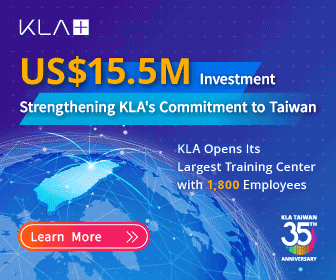With the US-China tech war raging on and companies like Micron caught in the crossfire, how should the government address semiconductor R&D and talent planning in response to new situational changes? Some US academics recently suggested that besides semiconductors, the US and Taiwan can also cooperate in fields like quantum and net-zero technologies.
According to a report by the Executive Yuan's Office of Science and Technology Policy (OSTP), Taiwan should continue to invest in R&D for the equipment, material, and components of silicon-based semiconductors. This is in response to the computing demand for computers, mobile phones, automobiles, and EVs, as well as preparing for the Angstrom generation of semiconductors.
Next, Taiwan should strengthen its R&D on compound semiconductors because high-power compound semiconductors will be widely used in EVs and green energy (i.e., off-shore wind power). As with high-frequency compound semiconductors, they need to satisfy the massive market demand for LEO satellites and 6G. For long-term computing requirements beyond 2030, Taiwan cannot ignore the autonomous capability of quantum computing and communications.
Taiwan's deputy minister of the National Science and Technology Council (NSTC) Tsung-Tsong Wu and several NTU professors are currently visiting the US and have recently participated in a seminar hosted by the newly-founded Taiwan Science and Technology Hub at Stanford University. Other participants of the seminar included university president Marc Tessier-Lavigne and dean of the School of Engineering Jennifer Widom, Cadence executive chairman Lip-Bu Tan, NVIDIA VP John Chen, former TSMC chief scientist Philip Wong, well-known AI scholar Fei-Fei Li, and more.
Wu emphasized that Taiwan should have more than just the semiconductor industry. For example, can Taiwan follow the same model used by wafer foundries to develop smart medical and innovative biomanufacturing via CDMO? Taiwan also hopes that the energy of the top academic and research institutions around Silicon Valley can bring forward technologies to Taiwan's academia and industry to promote the development of next-generation industrial applications.
In terms of quantum technology, Taiwan already has 17 teams currently engaged in R&D and talent cultivation for quantum computers and quantum communications. The government hopes that the teams will have opportunities to collaborate with the EU's quantum projects.
As with net-zero technology, according to Phase I (2023~2026) of the net-zero technology program approved by the Executive Yuan, Taiwan will develop a large-scale (15MW) floating wind-power platform technology, while also planning for forward-looking energy technologies such as deep geothermal and methane pyrolysis.




